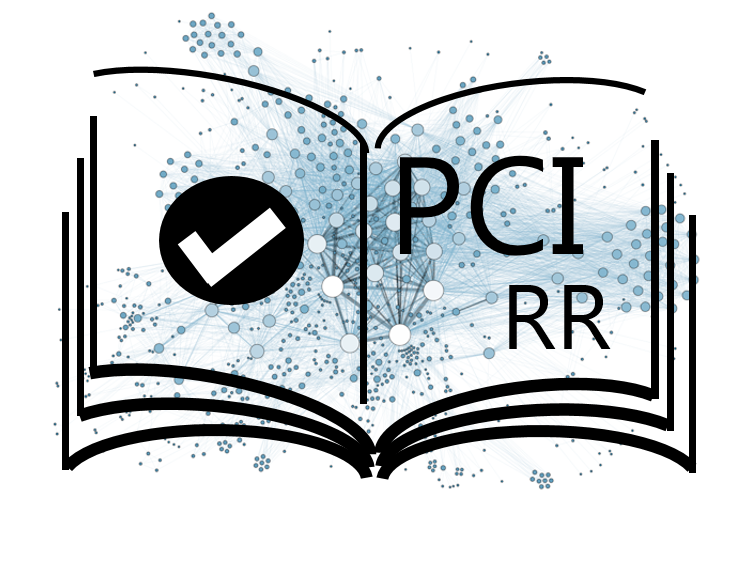
ZAHEDI Anoushiravan
- Department of Psychology, University of Muenster, Muenster, Germany
- Humanities, Life Sciences, Social sciences
- recommender
Recommendations: 2
Reviews: 0
Areas of expertise
If it were not for understanding how our mind and brain can navigate through the chaotic world around us, I would never study psychology. During the early days of my research career, I tried to understand the boundaries of human cognition by investigating the question of unity versus diversity of executive functions. Executive functions are a group of cognitive processes that help us cope with our ever-changing environment. During my Ph.D., however, the validity of the question itself became a question, which to this day is still one of my research foci. That is, whether cognitive control can be better understood as a distributed control system or a centralized one. Not only the questions but also the tools that I used for addressing those questions opened several ongoing research topics for me, including the effects of placebo and (hypnotic-)suggestions on cognitive functions and human consciousness.
After my Ph.D., expanding my research into decision-making, I became intrigued by different elements that can affect our choices. I am still investigating how various components of decision-making interact and whether it is possible to dissociate their underpinning neural systems.
Early in my career, I became convinced (to this day at least) that predictive coding provides a potent framework for understanding human perception, action, and cognition. That is why at the moment understanding human cognition through the predictive coding framework is one of my main research interests.
I used several neuroimaging techniques, including electroencephalography (EEG) and functional magnetic resonance imaging (fMRI), and various statistical analyses, such as structural equation modeling (SEM), confirmatory and exploratory factor analysis (FA), and Bayesian statistics. Enhancing existing analysis techniques is always of great interest to me.
Recommendations: 2
06 Mar 2025

STAGE 1

The role of extra-striate areas in conscious motor behavior: a registered report with Fast-Optical Imaging
Neural underpinning of conscious perception of visual stimuli disentangled from motor confounds
Recommended by Anoushiravan Zahedi based on reviews by 3 anonymous reviewersThe debate about consciousness and its neural underpinnings is a hot topic in cognitive neuroscience that has driven innovative original research and theoretical frameworks (Dehaene et al., 2006; Lamme, 2006). Consciousness itself can be defined and studied from different perspectives, such as neuropsychology (Laureys et al., 2004; Monti, 2012), applied philosophy (Blanke & Metzinger, 2009), and experimental cognitive neuroscience (Dehaene & Changeux, 2011). However, after several decades of research via different methods and from different perspectives, basic questions regarding consciousness and its neural underpinnings are still debated (Chalmers, 2010). One of the reasons for this ongoing debate is that consciousness cannot be easily disentangled from confounds, such as involvement of other cognitive processes like memory, language, and so forth (Dehaene & Changeux, 2011).
In the current study, Colombari et al. (2025) focus on disentangling neural markers of conscious visual perception from motoric responses. To this end, the study uses a cutting-edge neuroimaging technique, Event-Related Optical Signal (EROS), to measure the neural responses during a Go/No-Go detection task, which is especially designed to gauge visual perception regardless of response production. The study, therefore, is instrumental in addressing the neural foundation of conscious visual perception and is well situated to advance our understanding of consciousness and its neural underpinnings.
The Stage 1 submission was evaluated by three expert reviewers. After several rounds of revision, the recommender determined that the manuscript met the Stage 1 criteria and awarded in-principle acceptance (IPA).
URL to the preregistered Stage 1 protocol: https://osf.io/8ya2t
Level of bias control achieved: Level 6. No part of the data or evidence that will be used to answer the research question yet exists and no part will be generated until after IPA.
List of eligible PCI RR-friendly journals:
- Advances in Cognitive Psychology
- Brain and Neuroscience Advances
- Cortex
- Imaging Neuroscience
- In&Vertebrates
- NeuroImage: Reports
- Peer Community Journal
- PeerJ
- Psychology of Consciousness: Theory, Research, and Practice *pending editorial consideration of disciplinary fit
- Royal Society Open Science
- Studia Psychologica
References
1. Blanke, O., & Metzinger, T. (2009). Full-body illusions and minimal phenomenal selfhood. Trends in Cognitive Sciences, 13, 7-13. https://doi.org/10.1016/j.tics.2008.10.003
2. Chalmers, D. J. (2010). Facing Up to the Problem of Consciousness. In The Character of Consciousness (pp. 3-34). Oxford University Press. https://doi.org/10.1093/acprof:oso/9780195311105.003.0001
3. Colombari, E., Parisi, G., Mele, S., Mazzi, C., & Savazzi, S. (2025). The role of extra-striate areas in conscious motor behavior: a registered report with Fast-Optical Imaging. In principle acceptance of Version 5 by Peer Community in Registered Reports. https://osf.io/8ya2t
4. Dehaene, S., & Changeux, J. P. (2011). Experimental and theoretical approaches to conscious processing. Neuron, 70, 200-227. https://doi.org/10.1016/j.neuron.2011.03.018
5. Dehaene, S., Changeux, J. P., Naccache, L., Sackur, J., & Sergent, C. (2006). Conscious, preconscious, and subliminal processing: a testable taxonomy. Trends in Cognitive Sciences, 10, 204-211. https://doi.org/10.1016/j.tics.2006.03.007
6. Lamme, V. A. (2006). Towards a true neural stance on consciousness. Trends in Cognitive Sciences, 10, 494-501. https://doi.org/10.1016/j.tics.2006.09.001
7. Laureys, S., Owen, A. M., & Schiff, N. D. (2004). Brain function in coma, vegetative state, and related disorders. The Lancet Neurology, 3, 537-546. https://doi.org/10.1016/s1474-4422(04)00852-x
8. Monti, M. M. (2012). Cognition in the vegetative state. Annual Review of Clinical Psychology, 8, 431-454. https://doi.org/10.1146/annurev-clinpsy-032511-143050
01 Jun 2024

STAGE 1

Can Imagining Actions as Occurring Involuntarily Cause Intentional Behaviour to Feel Involuntary?
Can the sense of agency and reality be altered by our meta-cognitive models?
Recommended by Anoushiravan Zahedi based on reviews by Zoltan Kekecs and Sophie SiestrupAlterations in subjective experience, including alterations in the sense of agency (SoA) and reality (SoR), are commonly implicated in direct-verbal suggestions, such as hypnotic suggestions. Although extensively studied, how direct-verbal suggestions can alter the SoA and SoR is not understood (e.g., see Martin & Pacherie, 2019; Zahedi et al., 2024). One class of theories postulates that the alterations in SoA and SoR are related to meta-cognition. For instance, the intention to move or form a mental image can be kept out of conscious awareness, creating a sense of involuntariness (Dienes & Perner, 2007).
Relying on this theory, in the current study Sheldrake and Dienes (2024) postulate that the metacognitive processes related to these alterations can occur by appropriate use of imagination. In other words, by imagining the movement or object to be hallucinated and further imagining the underlying process was outside of awareness, one can elicit alterations in SoA and SoR. To this end, an intervention is devised whereby the participant is repeatedly asked to consider what might help or hinder them from imagining they are unaware of the relevant intention and thereby adjust their imagination. A control group will be asked to increase the feeling of involuntariness or altered reality simply by repeated practice. Afterward, participants will be asked in a test phase the extent to which the suggested experience felt involuntary.
The Stage 1 manuscript was evaluated over three rounds of in-depth review. Based on detailed responses to the reviewers' comments, the recommender judged that the manuscript met the Stage 1 criteria and therefore awarded in-principle acceptance (IPA).
URL to the preregistered Stage 1 protocol: https://osf.io/f8hsd
Level of bias control achieved: Level 6. No part of the data or evidence that will be used to answer the research question yet exists and no part will be generated until after IPA.
List of eligible PCI RR-friendly journals:
URL to the preregistered Stage 1 protocol: https://osf.io/f8hsd
Level of bias control achieved: Level 6. No part of the data or evidence that will be used to answer the research question yet exists and no part will be generated until after IPA.
List of eligible PCI RR-friendly journals:
References
1. Dienes, Z. & Perner, J. (2007). Executive control without conscious awareness: The cold control theory of hypnosis. In G. A. Jamieson (Ed.), Hypnosis and conscious states: The cognitive neuroscience perspective (pp. 293-314). Oxford University Press.
2. Martin, J. R. & Pacherie, E. (2019). Alterations of agency in hypnosis: A new predictive coding model. Psychol Rev, 126(1), 133-152. https://doi.org/10.1037/rev0000134
3. Sheldrake, K. & Dienes, Z. (2043). Can Imagining Actions as Occurring Involuntarily Cause Intentional Behaviour to Feel Involuntary? In principle acceptance of Version 6 by Peer Community in Registered Reports. https://osf.io/f8hsd
4. Zahedi, A., Lynn, S. J., & Sommer, W. (2024). Cognitive Simulation along with Neural Adaptation Explain Effects of Suggestions: A Novel Theoretical Framework. Frontiers in Psychology. https://doi.org/10.3389/fpsyg.2024.1388347